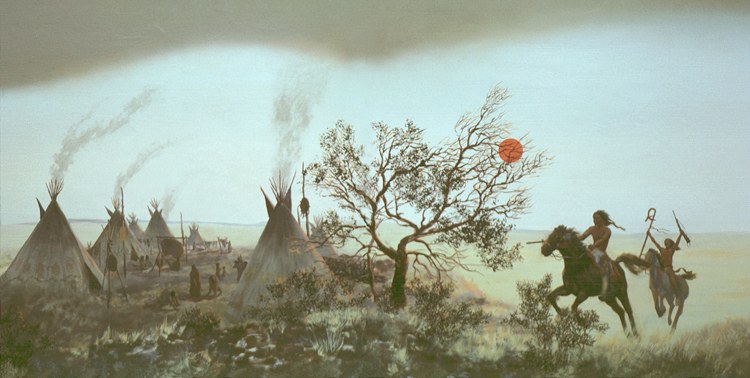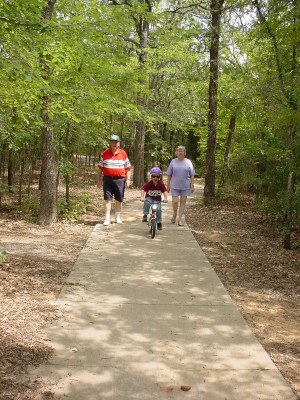History
First campers
Early hunter-gatherers camped in this area, hunting game, gathering edible plants, and repairing their stone weapons. One site nearby, the world-famous Aubrey Clovis site, is 11,550 years old! These were some of the first humans in North America.
Archeologists find clues to the age of a site by the type of spear or arrow points found there. At the Aubrey site, they found Clovis points, which were the earliest known type of American projectile point.
Many hunter-gatherers have spent time here looking for food. From the 1500s, Comanches, Kiowas and Tonkawas frequented the area.
Explorers and settlers
Spanish and French explorers began passing through in the 1500s. The French influence is still felt– Isle du Bois is French for “island of the trees.”
For the most part, settlers did not arrive until the 1840s. This was not a peaceful process, as settlers and Native Americans clashed over the years.
After the Civil War, army units from Fort Richardson and Fort Sill offered protection, and eventually settlers and soldiers drove Native Americans from the area.
Most people who settled in this area came from states such as Missouri, Kentucky and Tennessee. The woods may have reminded them of their former homes. Many settlers planted vegetable gardens, raised hogs and chickens, and kept cows. Like earlier peoples, they hunted wild game and gathered seasonal fruits and vegetables. You can visit the remains of an early homestead at Isle du Bois. People lived at the “Chimney site” from the late 1800s through the 1940s.
Harnessing the river
The Trinity River Basin is the primary water source for Dallas-Fort Worth and Houston – the two most populated urban centers in Texas. The 29,000-acre Ray Roberts Lake is one of 22 reservoirs on the Trinity River.
The lake provides water to Dallas and Denton, but that’s not all. It helps contain floods, stores water, provides fish and wildlife habitat, and offers fishing, swimming and boating.
Denton Congressmen Ray Roberts (1913-1993) worked tirelessly on water issues. His legacy includes the reservoirs on the Trinity.
Parks
The lake is surrounded by the state park, wildlife management areas, wetlands and waterfowl sanctuaries. TPWD operates Ray Roberts Lake State Park under lease from the U.S. Army Corps of Engineers and the cities of Dallas and Denton.
You can access the lake from all park units except the greenbelt.
- Isle du Bois Unit (1,397 acres) is on the south side of the lake and opened in 1993.
- Johnson Branch Unit (1,514 acres) is on the north side of the lake and opened in 1996.
- Ray Roberts Greenbelt is a 20-mile multiuse trail system that opened in 1999. It follows the heavily wooded banks of the Elm Fork of the Trinity River.
Satellite units (all have boat ramps):
- Jordan Unit (477 acres; home to the Lone Star Lodge and Marina)
- Elm Fork (290 acres, trailhead for the Greenbelt)
- Sanger (20 acres; home to the Lake Ray Roberts Marina)
- Pond Creek (20 acres)
- Pecan Creek (48 acres)
- Buck Creek (11 acres)
Protect the park
Please don’t pocket the past. Should you find an artifact (historical item), leave it in place and let a ranger know what you found. Don’t feed or harass wildlife; this is their home, too. Pick up trash and dispose of it properly.
For more information on the history of this area:


